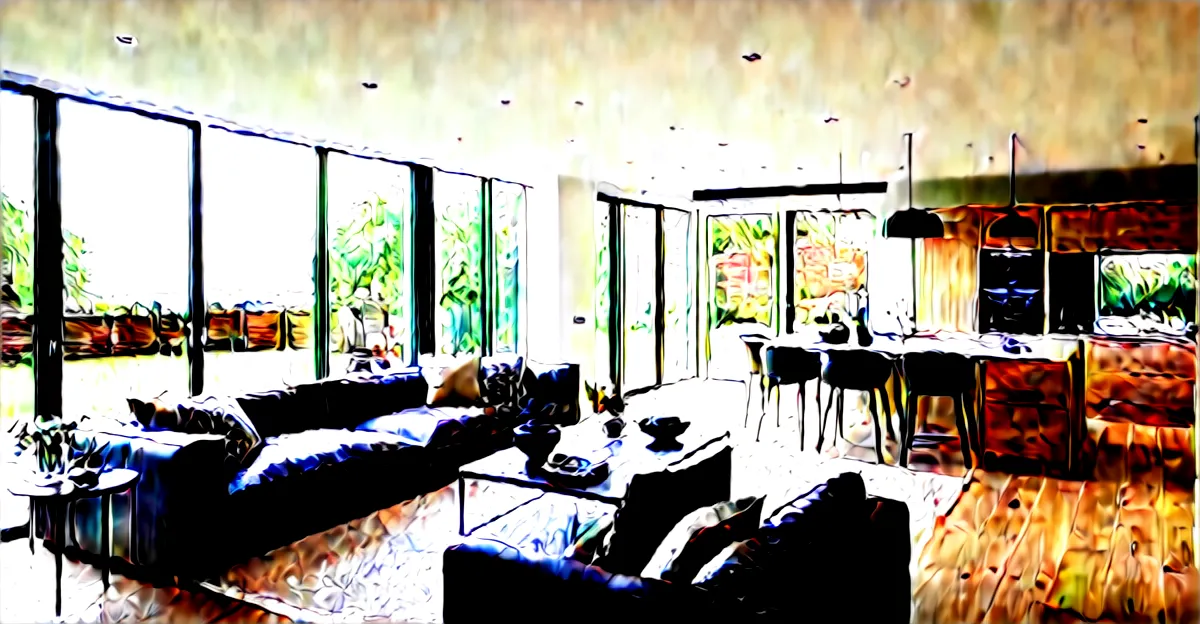Defining Features of UK Interior Design
Distinct UK home design characteristics blend timeless elegance with practical living requirements, creating interiors that are both charming and functional. British house interiors often display a well-balanced mix of traditional craftsmanship and adaptive modernity, emphasizing comfort and personality.
Rooted deeply in the history of British architecture, UK interior style reflects influences from centuries-old homes, where period details such as intricate moldings, sash windows, and classic fireplaces integrate seamlessly with contemporary furnishings. These homes frequently keep original features intact, maintaining historical character while accommodating modern lifestyles.
This might interest you : How Can You Transform Your Home’s Interior to Improve Daily Comfort?
Practicality defines much of UK interior style due to the often limited and irregular space in British homes. Clever storage solutions, multifunctional furniture, and thoughtful layout planning help maximise the use of space without compromising on aesthetic appeal. This approach aligns with the British appreciation for cosy, inviting environments that function well for everyday family life.
The use of layered textures and warm materials also highlights the signature approach in UK home design characteristics, marrying comfort with style. This attention to detail ensures interiors feel lived-in yet elegant, a hallmark of classic British house interiors.
Additional reading : How can you create a multifunctional living area in your UK home?
Influence of History and Architecture
The historical influence on British interiors is profound, with many elements drawn directly from the country’s rich architectural legacy. Key periods like the Georgian, Victorian, and Edwardian eras have left indelible marks on period homes UK, shaping both structure and style. These eras introduced signature features that remain fundamental in modern UK interiors, such as ornate moldings, sash windows, and grand fireplaces.
These period features are not only decorative but also integral to the identity of British house interiors. For instance, sash windows, a hallmark of Georgian and Victorian architecture, provide both aesthetic charm and practical ventilation, contributing to the cozy yet elegant feel typical of UK interior style. Similarly, fireplaces continue to be focal points, offering warmth and a sense of tradition, often retained or restored in renovations.
Balancing these historical elements with contemporary needs is a defining characteristic of UK design. Modern adaptations often integrate new materials and layouts while preserving period details, allowing homes to honour their architectural heritage without compromising on functionality. This thoughtful blend reflects the broader UK home design characteristics, where past and present coexist harmoniously to create spaces that feel both timeless and well-suited to today’s lifestyles.
Typical Colour Palettes and Materials
British colour schemes in UK interiors often favour a refined mix of neutrals, rich jewel tones, and muted shades. These choices create a calming yet sophisticated atmosphere. Neutrals such as creams, soft greys, and warm beiges form a timeless base, allowing accent colours like deep emerald greens, navy blues, and burgundy reds to add depth and character. This palette supports the traditional yet adaptable nature of UK interior style.
UK interior materials prominently involve natural and tactile finishes that enhance warmth and texture. Wood, especially oak and mahogany, is a staple in British house interiors, used in flooring, panelling, and furniture. Alongside wood, wool textiles add softness—think woven throws and upholstered armchairs that invite comfort. Stone surfaces, often seen in fireplaces and hearths, bring a grounded, earthy element, while brass fixtures contribute understated elegance. This combination reflects the signature UK home design characteristics of layering texture and material variety to balance style with coziness.
Layering these materials is essential to the British decor aesthetic. For example, a living room may feature a stone fireplace framed by wooden bookshelves, complemented by woollen cushions and brass lamp fittings. This creates a tactile richness that appeals to the senses and emphasizes practical comfort without sacrificing elegance. In summary, British colour schemes and UK interior materials work hand in hand to produce interiors that feel both inviting and timeless, epitomising the distinctive blend of beauty and function characteristic of UK home design characteristics.
Layouts and Use of Space
British homes often face challenges due to limited floor area and unconventional room shapes, making UK home layout a critical design focus. To respond to these constraints, British room organisation prioritises practical yet stylish solutions that maximise every inch. Efficient use of natural light plays a key role; rooms are arranged to enhance daylight flow, contributing to the warm, inviting ambiance so characteristic of UK interior style.
Creating distinct functional zones within open-plan or compact spaces is common. This might include combining living, dining, and work areas without sacrificing comfort or flow. Multifunctional furniture is widely embraced to support this flexibility—a dining table can double as a workspace, while storage ottomans provide seating and hide clutter. These approaches reflect a broader emphasis in UK home design characteristics on adaptability and smart use of space.
Additionally, the clever incorporation of architectural nooks and alcoves helps exploit areas often overlooked. These spaces are transformed into cozy reading corners or practical storage zones, enhancing room usability without altering the footprint. Built-in shelves or under-stair cupboards are frequent features that align with the British preference for tidy, efficient interiors.
Overall, the space-saving solutions UK homes commonly employ ensure that practicality and style coexist. Thoughtful layout planning, combined with creative furniture choices, supports comfortable living even in smaller or older properties, reinforcing the distinctly harmonious yet functional spirit of British house interiors.
Comparison with International Interior Styles
British interiors stand apart notably when compared to US and European interior designs, revealing unique priorities shaped by the country’s climate, history, and cultural nuances. Unlike the often more expansive layouts typical of many American homes, UK home design characteristics show a clever adaptation to smaller, irregularly shaped spaces. This difference stems largely from the British preference for cosy, efficient living environments rather than the open-concept trend popular overseas.
Climate plays a significant role in distinguishing the UK interior style. The frequently cooler, damper British weather calls for warmer materials and layers—such as woollen textiles, heavy curtains, and rich upholstery—that are less emphasized in many European styles. This results in interiors that are not only elegant but prioritise comfort and warmth, setting British house interiors apart with a distinctly inviting ambiance.
When it comes to lifestyle, British interiors often demonstrate a greater emphasis on privacy and individual room purpose. While international designs may lean toward open-plan concepts, British room organisation typically blends openness with clearly defined zones, offering a mix of social and secluded spaces. This reflects a British cultural preference for balance between communal living and personal retreat within the home.
Creativity and heritage also strongly influence the British approach. Unlike some global styles favouring minimalism or sleek modernism, UK homes frequently incorporate eclectic touches and vintage elements, showcasing a storytelling aspect through layering and decoration. This blend of comfort, tradition, and inventive use of space truly encapsulates what makes UK home design characteristics uniquely recognizable on the global stage.
Current and Emerging Trends in UK Interiors
UK interior trends for 2024 reveal a dynamic blend of modern British decor with a deep respect for heritage. One of the most notable shifts is the resurgence of maximalism, where bold patterns, rich textures, and layered décor elements come together to create vibrant, expressive spaces. This trend allows homeowners to showcase personal stories and collections, enriching the traditional British home inspiration with contemporary flair.
Another significant trend is the revival of heritage styles, echoing the charm of period homes while incorporating updated materials and finishes. This echoes the classic UK home design characteristics of balancing history and modernity, blending vintage details with fresh interpretations. Homeowners often incorporate antiques, traditional textiles, and architectural features thoughtfully paired with sleek, eco-conscious materials.
Sustainability is increasingly pivotal in UK interior design trends. The use of recycled or responsibly sourced materials fits well with the British appreciation for craftsmanship and longevity. This eco-conscious approach extends to furniture, textiles, and finishes, showing how modern British decor integrates environmental awareness without sacrificing style. For instance, sustainable wood and natural fibres like wool remain popular choices, reinforcing the tactile warmth signature to UK interior style.
Together, these emerging trends highlight a contemporary British home aesthetic that honors tradition, embraces individuality, and prioritises sustainability—key facets of the evolving British home inspiration landscape.
Visual and Experiential Examples of UK Interiors
Exploring UK interior examples reveals a vibrant spectrum, from quaint countryside cottages to sleek London flats, each embodying unique facets of British home inspiration. Countryside cottages often highlight rustic charm through exposed wooden beams, stone fireplaces, and floral-patterned wallpapers. These elements combine to evoke warmth and nostalgia while showcasing traditional UK interior style.
In urban settings, London flats present a different canvas, focusing on clever space utilisation and contemporary touches layered with classic details. Patterned flooring—such as encaustic tiles or herringbone wood—and bold, eclectic collections of artwork or ceramics create a rich sensory experience. These thoughtful design choices demonstrate the fusion of historic character with modern sensibility, a key trait of British house interiors.
Experiential touches play a vital role in defining the personality of UK homes. Textured cushions, layered curtains, and curated antiques invite tactile interaction and storytelling, making each space deeply personal and lived-in. This approach reflects the enduring British preference for interiors that not only look beautiful but feel welcoming and functional, highlighting the essence of UK home design characteristics.




